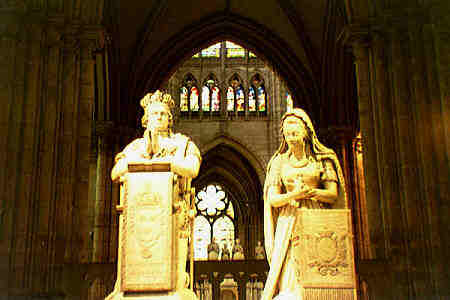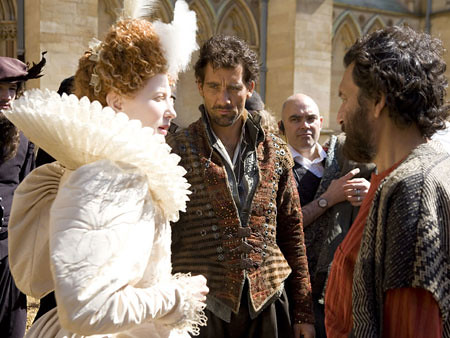 Yesterday, November 2, marked the 252nd birthday of Marie Antoinette! It seems to call for an elaborate cake, some big hairdos and gowns, but since I’m still tired out from Halloween (and all those mini Kit Kats), a Risky Regency post will have to do.
Yesterday, November 2, marked the 252nd birthday of Marie Antoinette! It seems to call for an elaborate cake, some big hairdos and gowns, but since I’m still tired out from Halloween (and all those mini Kit Kats), a Risky Regency post will have to do.
Archduchess Antonia Josefa Johanna von Habsburg-Lothringen was born at the Hofburg Palace in Vienna in 1755, the 15th child of Maria Theresa and Francis Stephen (after that many kids, I’m surprised they still had so many names to bestow). She grew up in one of the more innovative and informal courts of Europe (informal, of course, being a relative term). Some of her parents’ changes included a relaxation of who could be received at court (which allowed many people of merit as well as high birth to rise in Imperial favor), a laxer etiquette in dress, and the abolition of certain protocols (like the one that allowed dozens of courtiers to crowd around while the empress gave birth). There was also a new and strange emphasis on private family life. None of this would much help young Antoine, as she was called, when she went to uber-strict Versailles.
As there were so many other daughters to be married off first, Antoine was the subject of benign neglect. Her sub-par education meant she could barely read or write, even in her native German, before her 12th birthday, when things started to change. Thanks to various earlier betrothals, and a smallpox epidemic that killed or disfigured several of her sisters, she was the only daughter left when there was a chance for an alliance with old enemy France. She was betrothed to the Dauphin Louis Auguste, and her education and beautification (and lectures from her mother) were rapidly stepped up. She was married to the Dauphin by proxy on August 19, 1770 in the Church of the Augustine Friars, with her brother Ferdinand standing in for bridegroom. The “real wedding” took place May 16 the next year in the chapel at Versailles. It was quickly followed by the ritual bedding, and then–well, not much. The marriage was not consummated for another 7 years.
The reactions to the marriage in France were mixed. On one hand, the pretty young Dauphine was quite popular with the people, who saw her as a breath of fresh air after long years with the debauched Louis XV. On her first appearance in Paris in June 1773, over 50,000 people turned out to cheer her. But in the court, the new alliance between France and Austria was a tense one. The Dauphin’s aunts (Mesdames Tantes) nicknamed her “l’Autrichienne” (a pun on “bitch”–nice in-laws), and there was a brewing feud between Marie Antoinette and the king’s mistress Madame Du Barry. They did not actually speak to each other until New Year’s Day 1772, after many long lecturing letters from Maria Theresa about the dangers of alienating the king’s favorite.
To make up for the lack of action in her marriage, Marie Antoinette began to spend more on gambling (cards and horse races), trips to Paris, new gowns from the overpriced Rose Bertin, shoes, pomade, rouge, ostrich plumes, and lots of other stuff. She also formed deep friendships with many of her ladies, such as the morbidly sensitive Princesse de Lamballe and the fun-loving Comtesse de Polignac, who would eventually form the cornerstone of the envied and maligned Queen’s Private Society (Societe Particuliere de la Reine). She also found admirers in her brother-in-law the Comte d’Artoise, the Baron de Besenval, the Duc de Choigny, and Count Esterhazy. In 1778, she met the greatest admirer of all, the Swedish heartthrob Count Axel Von Fersen.
In April 1774, a week after the triumphant premiere of the opera Iphigenie en Aulide by her old teacher Gluck, Louis XV fell ill with smallpox. He died on May 10, and Marie Antoinette was Queen. Louis XVI was crowned at Rheims on June 11, 1775. Marie Antoinette was not crowned at the ceremony, but watched from a specially constructed box. Though her seat was to the side of the altar, there were still some complaints that she blocked the view with her immense pouf.
 In August 1775, her husband gifted her with the Petite Trianon, first constructed for Madame de Pompadour. It became her retreat, a place to run away from stifling court etiquette and indulge in gardening and decorating, and parties for her Society. Her infamous hameau, where she could play at farming and peasantry, was built there.
In August 1775, her husband gifted her with the Petite Trianon, first constructed for Madame de Pompadour. It became her retreat, a place to run away from stifling court etiquette and indulge in gardening and decorating, and parties for her Society. Her infamous hameau, where she could play at farming and peasantry, was built there.
In April 1777, her brother the Emperor Joseph paid a visit to Versailles, and, it seems, helped the royal couple with their Little Problem. Whatever he advised, it worked, and the marriage was consummated on April 18, 1777. On May 16, 1778, it was announced that the Queen was pregnant. Marie-Therese Charlotte, Madame Royale, was born December 19, after a long, difficult labor (and lots of people gawking). The long-awaited Dauphin, Louis Joseph Xavier Francois, was born October 22, 1781. Marie Antoinette again went against court etiquette and took a deep interest in the upbringing of her children. (Once started, they kept coming–Louis Charles, Duc de Normandie was born in 1785, and Princess Sophie, who did not live long, came along soon after).
Despite the production of “Children of France,” and a new program of economy and, er, maturity (marked by the donning of dark silks in place of muslin and ribbons), her unpopularity grew and grew. Perceived extravagance and attempts at political meddling earned her the nickname of “Madame Deficit” in the summer of 1787. In November, at the start of a bitter winter, things took a bad turn when the parlement was exiled and the May Edicts took effect in 1788. Bread prices began to rise due to the terrible harvest; the Dauphin became dangerously ill (he would die in June at the age of 7); and Marie Antoinette was hissed whenever she went out in public. In May 1789, the Estates General returned. The Third Estate declared itself a National Assembly and took the famous Tennis Court Oath. The situation escalated violently to the storming of the Bastille, July 14.
By the end of August, the Declaration of the Rights of Man was adopted, officially creating the beginning of constitutional monarchy in France. This did not appear to solve much, though. A dinner for the royal bodyguards at Versailles was described as an “orgy” in the newspapers, and in October Versailles was stormed and the royal family taken to Paris to live under house arrest at the Tuileries.
Anyhoo, to make a long story shorter–there was war between Austria and France, an aborted escape attempt, massacres and other bad things. On January 21, 1793, Louis was executed, and Marie Antoinette’s health deteriorated (she probably suffered from tuberculosis and uterine cancer, made worse by the harsh conditions of imprisonment). She was tried by revolutionary tribunal on October 14, accused of (among many things) having orgies at Versailles, sending millions of livres of treasury money to Austria, spying for Austria, and plotting to kill the Duc d’Orleans. After two days of proceedings, she was found guilty in the early morning of October 16 and executed later that day, a couple of weeks before her 39th birthday. Though at first buried in an unmarked grave, her body was recovered in 1815 and reburied at St. Denis.

If you could give a birthday party for any person in history, who would it be? And what would your party be like???















